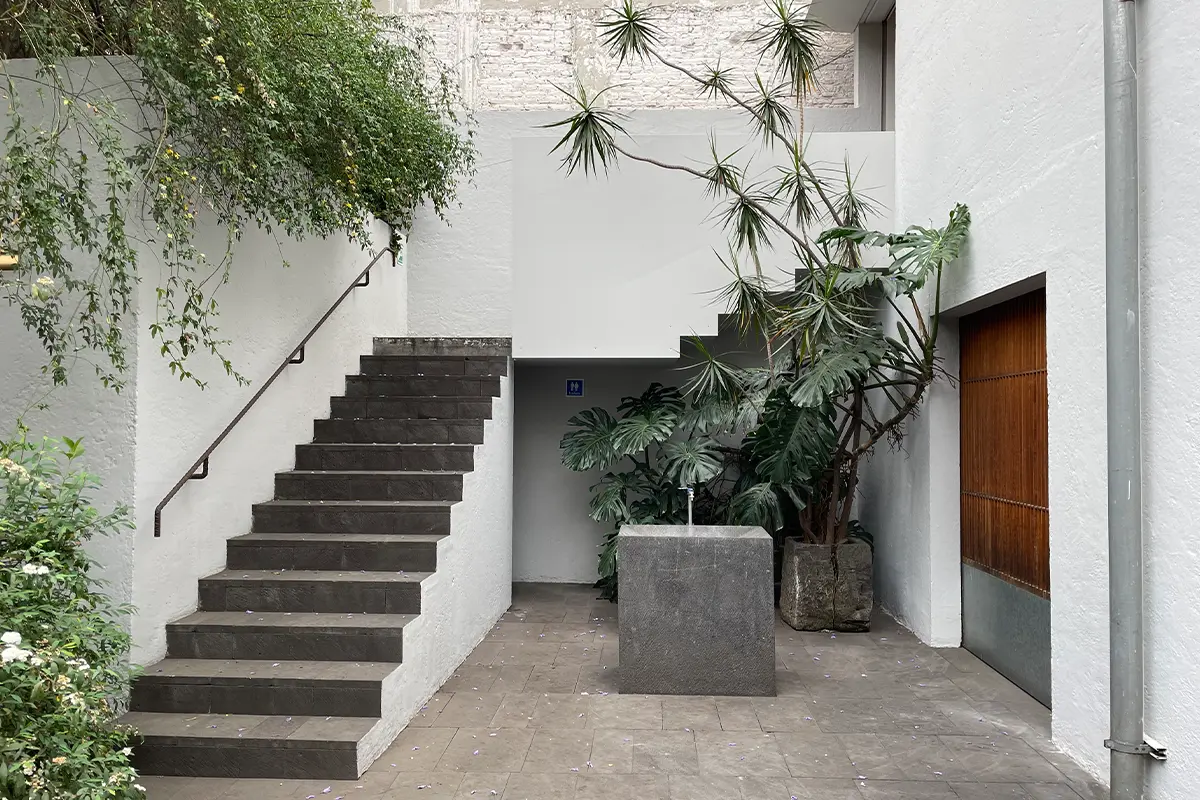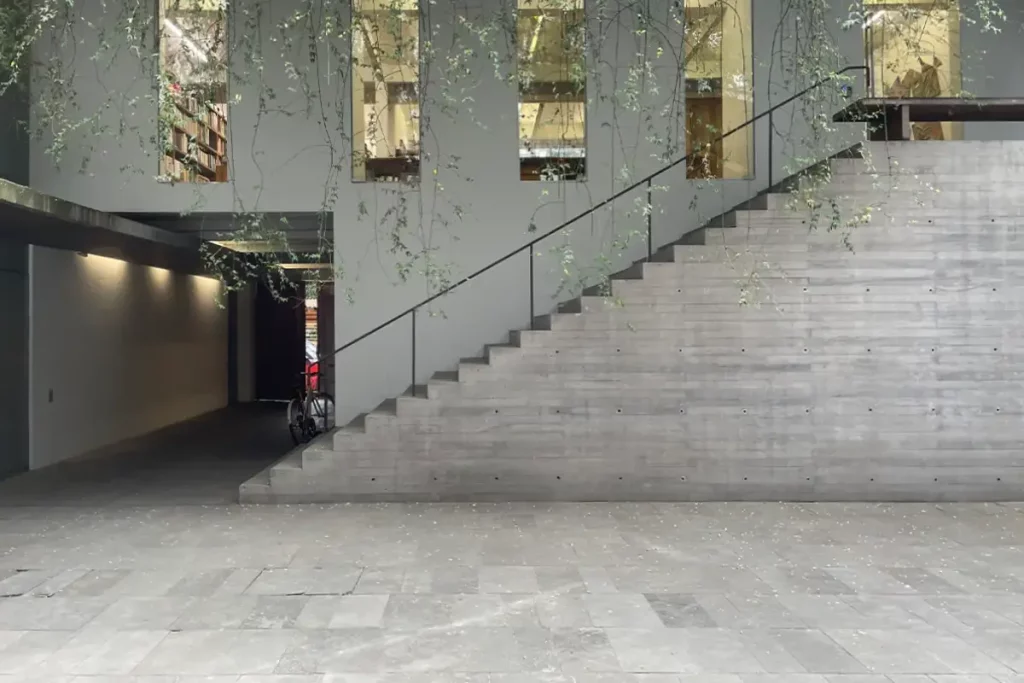kurimanzutto’s first exhibition, Economía de Mercado, took place in 1999 in Mexico City and remained open to the public for less than twenty-four hours
kurimanzutto: contemporary art between Mexico and NY
kurimanzutto is a contemporary art gallery split between two project spaces, one in Mexico City and the other in New York. It was founded as a nomad gallery by Mónica Manzutto, José Kuri and Gabriel Orozco in the late Nineties. After settling down first in the Mexican capital and then in the United States, kurimanzutto continues to push art outside of the traditional white cube. The gallery aims at allowing artists’ projects to exceed the potential of the gallery’s physical space, reaching outwards and engaging with alternative sites across the city.
Driven by the same desire to focus on the artists and prioritize creative innovation above all else, today the gallery represents thirty-eight Mexican and international artists, and continues to organize and support exhibitions in diverse cultural spaces, aiming at not being just a place for viewing and contemplation, but also at supporting criticism and research.
The birth of kurimanzutto: itinerant art in Mexico
kurimanzutto’s first exhibition, Economía de Mercado, took place in 1999 and remained open to the public for less than twenty-four hours. In a rented market stall, thirteen artists displayed pieces they had created using materials for sale in the market, which were sold at prices comparable to other goods, such as kitchen utensils, foodstuffs and cleaning supplies.
It was Mexican artist Gabriel Orozco who first proposed to José Kuri and Mónica Manzutto – hence kurimanzutto – to create a nomad gallery, convinced of the potential of the artists living and working in Mexico City and of the city itself. «He invited us to focus on artists and art instead of on a space», José Kuri recalls. «Since a space would have put a distance between the artists, and what they were doing. We started with artists we knew personally, people we grew up with, with whom we questioned the world and developed a vision. Then those artists began recommending other artists to us and our community expanded. We always hear what our artists have to say and they play a role in the developing of kurimanzutto’s network».
Gabriel Orozcopointed out to Joséand Mónica the need for a support structure that would allow emerging artists to develop their language and realize projects within their country as well as abroad. «We decided to use Mexico City as our exhibition space and for every project we would look for the right place to do it, giving art the contexts it needed». Theseincluded, for instance, a bumper car park, a supermarket parking lot, Mónica and José’s apartment, Los Manantiales restaurant in Xochimilco and the shipping container of a semi-truck.
kurimanzutto promoting a beyond-borders exchange of ideas
The gallery’s itinerant condition allowed artists to organize shows in unconventional places, which in turn freed them up to experiment with different projects. Such flexibility also afforded the gallery a series of collaborative opportunities, with artists and founders traveling abroad and hosting international artists and curators in Mexico City to develop projects.
From the very beginning kurimanzutto sought to foment conversations between the international and the local, establishing an exchange of ideas that could transcend national borders: «In 1999, at a time when Internet was not so diffused yet, we tried to overcome the lack of opportunities for artists in Mexico to sell their work. In order to do this, we needed to connect to a wider world».
In the early years, most of the artists participated in almost all of the gallery’s exhibitions. While each artist developed an individual practice, they also fed of each other’s work and the participatory dynamic of kurimanzutto, which gave them a sense of belonging and shaped the ethos of the gallery.
kurimanzutto now: two cities, one mission
After ten years working with no fixed space, using their own house as both office and storage, Joséand Mónica felt the urge for «A space where we could gather as a community. Somewhere where we could offer to the community what we had nurtured. Moreover, during the years we had collected quite an archive, which we wished to offer to people doing research, so it felt like a natural step».
In 2008, kurimanzutto inaugurated its current gallery space at calle Gob. Rafael Rebollar 94 in the colonia San Miguel Chapultepec. Built in 1949, the building, which had housed a lumberyard and an industrial bakery, was renovated by architect Alberto Kalach, who converted the bulk of the structure into an exhibition space, conserving the original wooden ceiling trusses and ample natural light.
kurimanzutto, moving outside Mexico
Again, ten years afterwards, kurimanzutto felt the need to have a place outside Mexico to offer to the international community they were working with and opened a project space at 22 East 65th Street in New York City in 2018. «We were offering an inner sight of Mexico to the many people coming to visit us, but at that point we found it necessary to have an outer place where we could expand. We chose New York, which became an extension of what we do in Mexico». Then, in 2022, another space was opened at 520 West 20th Street in the Chelsea neighborhood of New York.
Located in two different contexts – and countries – the two spaces «give different meanings to art and artworks». But they share the same mission. Both in Mexico City and in NY kurimanzutto wants to establish connections between artists, institutions and art professionals who have accompanied the gallery across its evolution in order to develop the artistic currents that live and breathe in the two cities.
kurimanzutto’s vision: contemporary art as a need
For the kurimanzutto’s founders contemporary art is first of all a need. «I feel like I need to connect to the world through art, it is something that I have to live and to think. It’s a way of understanding the world I live in, a way of questioning where I am, what is happening and how I can act in this world», states José Kuri.
Therefore, kurimanzutto’s goal for the future is to contribute to building a better world though art, which they believe that can promote a critical vision and thus helping in challenging every kind of political, social and cultural issue.
An example is TITAN, an intervention into New York’s outmoded network of phone booths, conceived by Damián Ortega and Bree Zucker, which took place in 2020, just before the phone booths were definitively removed, during the global pandemic that left museums and galleries closed and restricted to viewers. The advertisements in the phone booths were replaced by artist-made posters, which called into question modes of communication along the Midtown thoroughfares where they were encountered. This open-air group exhibition took as its premise that a gallery may exist in open space, be accessible at any hour and remain free to all viewers.
Mexico City: Daniel Guzmán – The man who should be dead
On view from June 1 to July 28 at kurimanzutto in Mexico City is the most recent chapter from the exhibition series The man who should be dead by Mexican painter Daniel Guzmán, who has been conducting research into drawing since 2017. The exhibition consists in four wooden structures, which contain, inside them, a selection of drawings that have evolved throughout the last few years.
Guzmán turned his drawings into structures and spaces that can display other visual references from his practice, such as music criticism, science fiction, narrative literature, essays and poetry. In particular, quotes from Lester Bangs, Bob Dylan, Greil Marcus, Jorge Luis Borges, Philip K. Dick, Rodolfo Walsh, Ricardo Piglia, Julio Cortázar, Roberto Bolaño, José Agustín Goytisolo, Alejandro Zambra, Oswaldo Zavala, Tamara Kamenszain, Rosario Bléfari, Mariana Enríquez, Cecilia Pavón, Fabián Casas and Washington Cucurto can be found. A conducting thread is also The Book of Changes: The I Ching, which leads through a series of coincidences related to the oracle that allowed the artist to articulate the depth and breadth of the exhibit.
New York: Carlos Amorales – Words of mouth and hands
From June 23 to July 28 kurimanzutto hosts in New York the first solo exhibition by multidisciplinary Mexican artist Carlos Amorales. Words of mouth and hands is a part of Amorales’ transdisciplinary inquiry into the relationship between contemporary art and different cultural practices, which interest him for their potential to manifest the sense of existential fragmentation in contemporary life. Through the act of repetition, formal experimentation and conceptual questioning, Amorales aims at offering new perspectives into such practices and displaces them into art.
The main piece of the exhibition consists in a six-channel video installation. One video portrays musician, composer and performer Sarmen Almond singing two poems and the myth of the serpent, while percussionist Diego Espinosa performs a series of dancefloor rhythms with his hands and body. Another one shows the artist’s hands browsing through a notebook in which he developed an idiosyncratic system of signs and symbols for conducting choirs, which were inspired by the sight of choir director Wilma Ten Wolde conducing the Nationaal Vrouwen Jeugdkoor at a choir festival in Utrecht.
The rest of the gallery space is occupied by drawings showing simple elements, such as hands, profiles, colors, dots, and lines, which allow the artist to enter the musicians’ language and shape the direction of the performative aspect of the project, creating a formal and a conceptual link between the videos and the graphic artworks.
kurimanzutto
First started in the late Nineties as a nomad gallery in Mexico, kurimanzutto now owns two exhibition spaces in Mexico City and New York. Currently, in Mexico City kurimanzutto hosts The man who should be dead, last chapter of an exhibition series by Mexican painter Daniel Guzmán, while in New York it displays Words of mouth and hands, an interdisciplinary solo show by Mexican artist Carlos Amorales.
Debora Vitulano
























